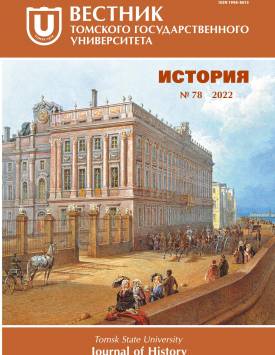Public discourse of archaelogical heritage and its interpretations
This article considers the phenomenon of archaeological heritage as a multi-linear cultural process that correlates with various cultural meanings and values. The relevance of this research is connected with the western heritage canon rooted in the scientific community which considers all kinds of heritage (including archaeological one) as a material expression of a national-political idea. However, some cases demonstrate completely different forms and roles of heritage (religious, creative, educational) where the national-political factor sometimes plays a secondary or even insignificant role. So we can suggest that formation of images of the past is determined by the social agency of people, but the institutional influence of power. The purpose of the article is to present certain archaeological images in public discourse, from the standpoint of social actions, individual and group values, language and ways of discussion and social factors which make heritage demanded. The article’s author develops an approach in considering such key definition as heritage analyzing the key works in the field of Heritage Studies and Critical Heritage Studies. At the end of this section the author considers all symbols and values connected with heritage as a part of the public (social) discourse. Public discourse suggests that heritage is not a fabricated image of the past, it focuses on the connection with the present, it can be changed, clarified and concretized depending on private and public norms, values and identities In the next section the concept of archaeological heritage is concretized by considering the specific material features of archaeological monument which distinguish them as a separate type of heritage. We can note scientifically proven pastness, clarity, fragmentation and ambiguity of archaeological monuments. In the author's opinion these features form a variety of contexts and options for reading an archaeological monument and set a special stimulus for interpretations of the material past. Thus the multi-contextuality of archaeological monument forms a multitude of "heirs" and a variety of forms of dealing with the past. The social and cultural cases noted in the paper (“Altai Princess”, the phenomenon of Arkaim, the Prussian ports in Koenigsberg as a place of national memory, etc.) show different values and meanings that are not limited by the framework of official scientific and political statements. It is concluded that heritage is not a completed socio-political product, but an unceasing multi-linear process. Every social act in relation to heritage (creation, perception, perpetuation, narrating and even inaction) leaves a discursive consequence. Thus the interpretation of the archaeological past is an anthropological problem that needs to be studied with a wide range of qualitative methods (participant observation, biographical interviewing, discourse analysis, etc.). The author declares no conflicts of interests.
Keywords
heritage, archaeological monument, social interpretation, public discourseAuthors
| Name | Organization | |
| Chernyshov Artyom V. | Tomsk State University | chernyshov.artem.1996@mail.ru |
References

Public discourse of archaelogical heritage and its interpretations | Tomsk State University Journal of History. 2022. № 78. DOI: 10.17223/19988613/78/23
